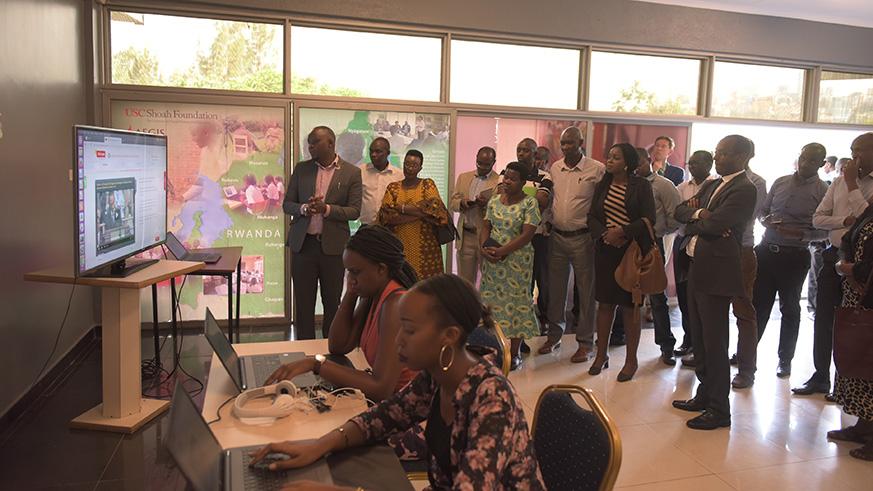
Frederic Byumvuhore, The New Times
Kigali Genocide Memorial has unveiled its online educational platform that helps to display testimonies of survivors and witnesses of the 1994 Genocide against the Tutsi.
The launch took place at Kigali Genocide Memorial on Tuesday.
Dubbed “iWitness,” the digital platform will be used mainly by students and teachers in line with the competency-based curriculum, especially for Genocide related courses.
The Visual History Archive (VHA) and IWitness were developed by the University of South California – Shoah Foundation.
Aegis role on VHA was to provide content “testimonies”on the Genocide against the Tutsi, while for IWtness, Aegis collaborated with USC Shoah Foundation on creating the landing page and specific for Rwanda.
Launching the computer lab that will facilitate the public to access the archives, Dr Jean-Damascene Gasanabo, the Director General of Research and Documentation Centre at the National Commission for the Fight against Genocide, said the facility will be a good learning tool.
“The facility is a useful tool to effectively teach young Rwandans about the past. The country wants to teach the young generation about the Genocide to help them prepare for the future. The documented data has videos of first-hand witnesses as well as subtitles. This will help students understand better the history,” he said
According to Freddy Mutanguha, Aegis Africa Representative, iWitness will help to increase knowledge about the Genocide since it will enable the public to access visual testimonies of the 1994 Genocide against the Tutsi.
On the same day, the Visual History Archive (VHA) was launched. The platform is home to more than 55,000 testimonies of the Genocide against the Tutsi, other genocides as well as more mass killings worldwide that can be accessed in 15 countries. Rwanda becomes the first country in Africa to establish such a facility.
Mutanguha said since the centre has content about the Genocide against the Tutsi and the Holocaust, more visitors are expected to visit the Kigali Genocide Memorial.
Visual History Archive was developed to help researchers and academicians to do their work effectively.
Kori Street, Senior Director of Programs and Operations at the Institute for Visual History and Education in California, said that the facility will help researchers across the continent to come and do their work without travelling to other continents to get information.
